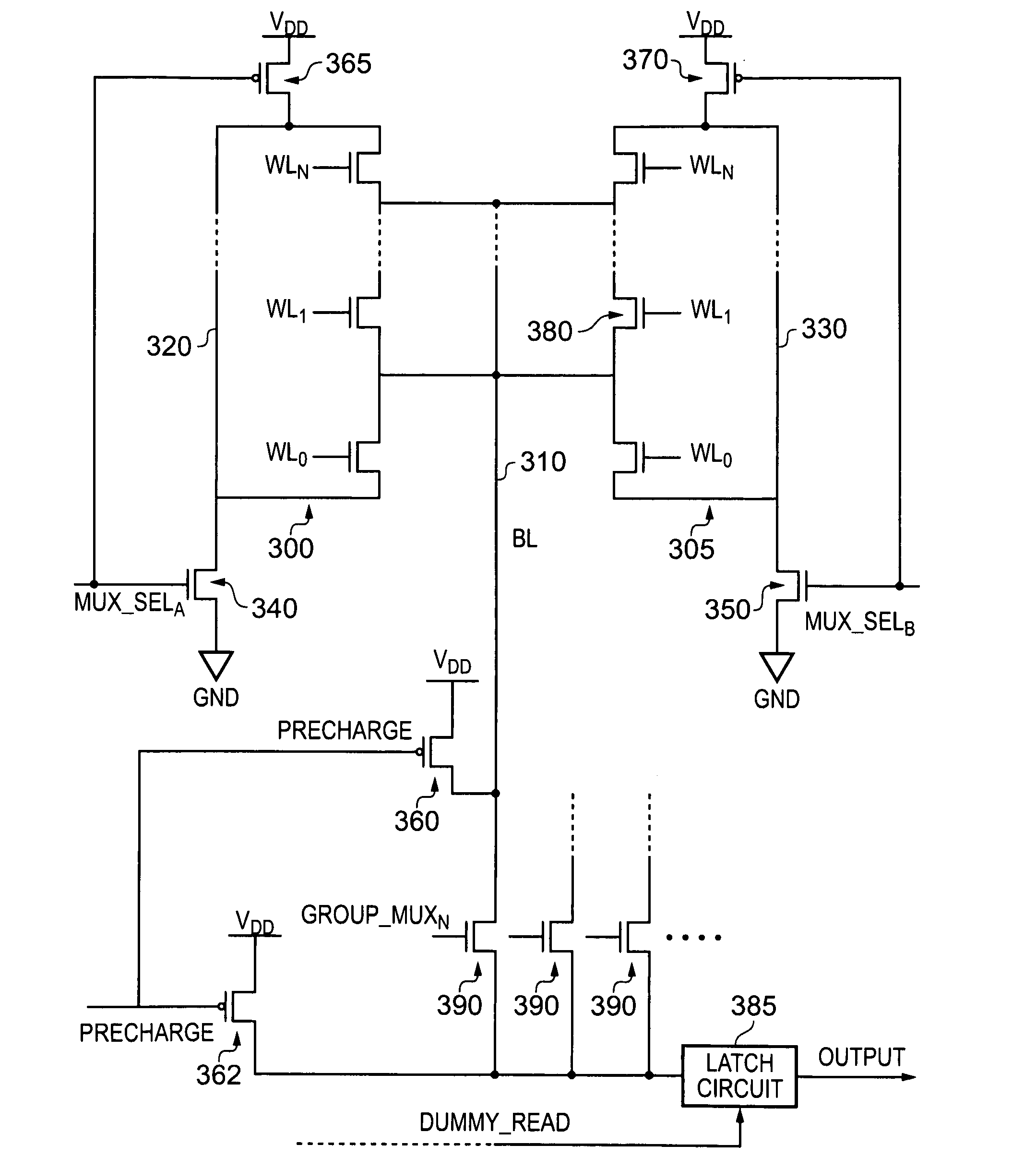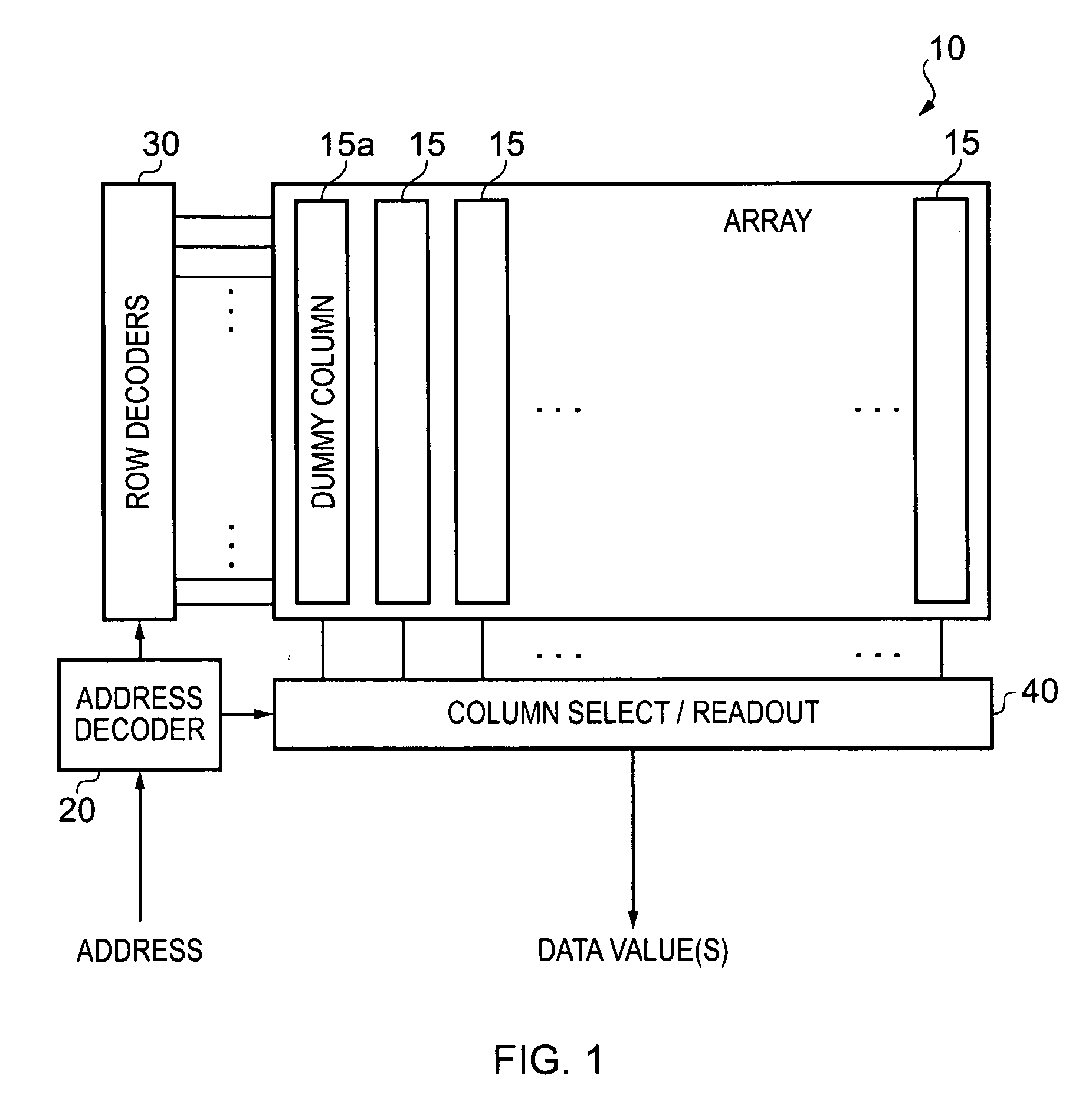ROM array
a rom array and array technology, applied in the field of rom arrays, can solve the problems of significant leakage across the memory cells, significant slowdown of the switching speed of the line, and can consume around 25% of the cycle, and achieve the effects of improving the density of the rom array, and reducing the cost of rom arrays
- Summary
- Abstract
- Description
- Claims
- Application Information
AI Technical Summary
Benefits of technology
Problems solved by technology
Method used
Image
Examples
Embodiment Construction
[0029]FIG. 1 schematically illustrates a ROM array according to one embodiment of the present invention. ROM array 10 comprises columns of memory cells 15 arranged in an array. Data stored in the memory cells of the ROM array is accessed by means of an address received by address decoder 20. Address decoder 20 passes control signals to row decoders 30 and column select / readout circuitry 40. A data value stored in a particular memory cell at the intersection of a given row and column is then read out, the data value being passed via column select / readout circuitry 40. The columns of memory cells 15 include a dummy column 15A which is not used to store data values for reading out, but rather to produce timing information for self-timing a read operation on one of the other columns.
[0030]Further detail of a ROM array according to one embodiment of the present invention is schematically illustrated in FIG. 2. As in FIG. 1, the ROM array 100 comprises a plurality of columns of memory cel...
PUM
 Login to View More
Login to View More Abstract
Description
Claims
Application Information
 Login to View More
Login to View More - R&D
- Intellectual Property
- Life Sciences
- Materials
- Tech Scout
- Unparalleled Data Quality
- Higher Quality Content
- 60% Fewer Hallucinations
Browse by: Latest US Patents, China's latest patents, Technical Efficacy Thesaurus, Application Domain, Technology Topic, Popular Technical Reports.
© 2025 PatSnap. All rights reserved.Legal|Privacy policy|Modern Slavery Act Transparency Statement|Sitemap|About US| Contact US: help@patsnap.com



